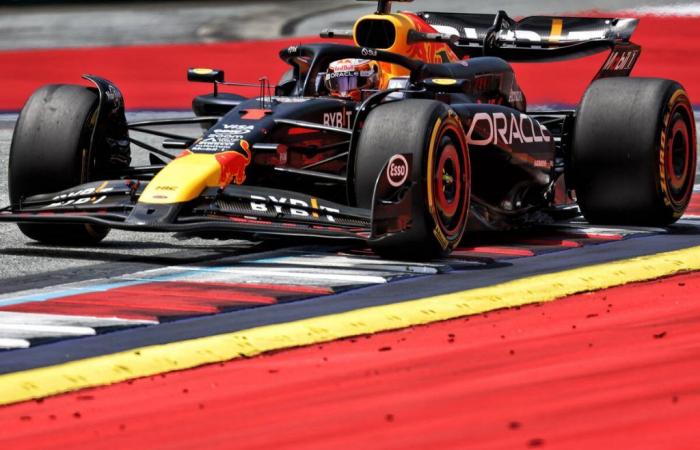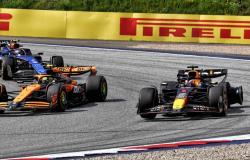The hectic Austrian weekend begins, with a very tight program due to the sprint format of the weekend, which includes a single free practice session, before taking to the track for the qualification valid for the short race on Saturday. The work program was therefore intense for all the teams, having in fact only one hour available to optimize the set-ups, on a technically simple but also very short track, where it is more difficult to capitalize on the technical advantages and where, therefore , every little detail can make the difference.
Red Bull pretty good
Unlike the last few races where the Milton Keynes team spent a huge amount of time trying to find the best balance for the car, on the Red Bull Ring the home team seemed to have some adjustments still to be made, but all in all quite good. Verstappen showed a good overall performance, but above all grip and speed in the second half of the lap, from turns 6 and 7 onwards, when the track starts to require more aerodynamic load and a lot of balance to be able to first tackle the long and fast central corners effectively, and then, above all, to have the necessary confidence in the last two corners to “throw” the car towards the inside almost blindly, with the very delicate exit between track limits and the sand added to waste time for those who make mistakes. And It is precisely in this final stretch where Verstappen, with data and graphs in hand, makes a significant difference to the competition, a sign of a driver already with good sensations from his single-seater and of a car in general with a good set-up basis. The delivery curve of the RB20 still appeared quite lean, but not exaggeratedly as seen on other occasions, confirming that the regime of the ex Honda PUs is kept very low on “only free” days, but when an official session is scheduled some extra horse is still squeezed out. But despite the best session time, life for the Dutch driver in qualifying doesn’t seem to be particularly simple, given what Mercedes and McLaren showed.
Mercedes and McLaren launch the challenge
As for the Brackley team, what was shown in free practice is remarkable: Hamilton’s best time, about half a second from Verstappen’s, was even recorded on hard tyres, and the impression was that a W15 with a good set-up and a high level of downforce. The Briton then validated the set-up at race pace with a long run of around 20 laps, again with constant times and low degradation. A good Mercedes therefore, which could try to have its say even in the Austrian heights. Just as it will almost certainly be the game that counts too McLaren. Piastri finished with the second fastest time, but the signals given by Lando Norris were even more encouraging, even though the Englishman did not finish his qualifying simulation laps, without therefore giving an idea of the behaviour of his MCL38 in the final stretch of the track, which is particularly critical. From what we see from Piastri’s data we note the lonely McLaren completesbut for the moment he is unable to keep up with Verstappen in the second half of the lap, although the impression is that Piastri was more conservative than the Dutchman. Of Mercedes in part and of McLaren in particular we note a full and early delivery curve, a sign of a dedicated calibration of the Mercedes Power Unit that anticipates the power discharge to get above 300 km/h as soon as possible, and then plateaus in that area, thus exploiting traction more than acceleration, as we know is particularly profitable on the Austrian track.
Ferrari to be translated
Finally, as regards the Maranello team, what we notice is first of all a fairly “long” and lean delivery curve, so with little advance and little power, especially in the long climb up to turn 3. The fact that Leclerc is very faster downhill than uphill compared to the competition seems to betray a greater quantity of fuel on his single-seatertogether with a power unit still limited in the power delivered. However, the SF-24 does not shine even in the last sector, where it suffers most of the gap, especially at turn 7 and in the last two corners. It is difficult to make precise predictions, because there are always many variables, but it is clear that Ferrari needs to optimize the set-up more to be competitive for the top positionssince on this track, as mentioned, every detail makes the difference. The sprint shoot out (or sprint qualification as we call it) will therefore likely be drawn to the thousandth, where every centimeter will count and mistakes will not be forgiven. We will see what the first official response of the Austrian weekend will be.






